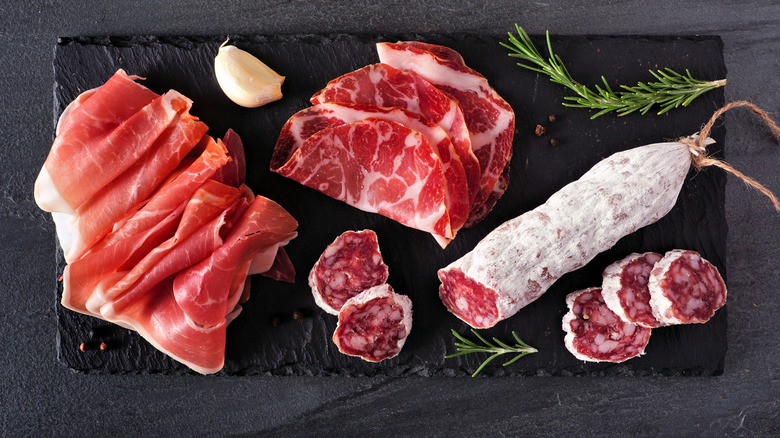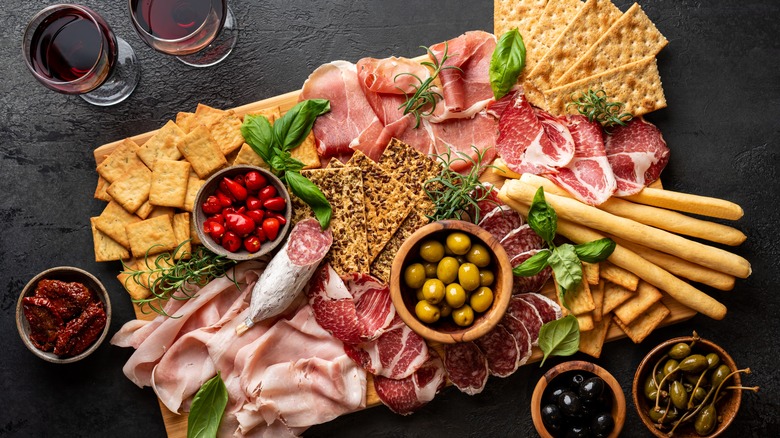Why You'll Never Find Cheese On A Charcuterie Board In France
American-style charcuterie boards have been trending for several years in the U.S., both on social media and restaurant menus. As the love of easy entertaining — grazing from one platter with no extra plates and silverware to wash — spread, so did the variety of foods that appeared on what we now rather loosely refer to as a charcuterie board, from cheeses, vegetables, and fruits to candy, cookies, and chocolates.
The word charcuterie is actually French and refers to the whole category of cured and sliced meats — similar to American cold cuts but generally made from pork. Examples are salami, rich prosciutto, Spanish jamón, and various pâtés and meat spreads made from a combination of pork and liver. So, as you can imagine, French people hear the word charcuterie and think of meat. Putting cheese on a meat board in France would be a bit like putting a big pile of tater tots in the middle of a salad bar. Possibly delicious but oddly out of place.
Cheese gets its own space and time
Cheese is considered a filling food in France, and since an appetizer is meant to spark the appetite and not extinguish it, a cheese plate isn't a typical pre-meal offering. So if your charcuterie plate is presented before a meal, you definitely wouldn't find cheese on there mixed with sliced meats. But at a cocktail (apéro) party or a gathering with heavy appetizers rather than dinner (known as a dînatoire), cheese might be served to round out the menu — but it still won't be on the plate mixing and mingling with the meats.
Although a traditional charcuterie board is likely to be a meat-only affair, you'll occasionally find a few complementary bites included to balance the tastes, like piquant tiny pickles, spicy Dijon mustard, or briny olives and pickled onions. More modern twists might include a bit of fresh or dried fruit or jam to complement the salty meats. These accompaniments are meant to enhance the flavors of cured provisions and not cover them up. So save the cookies and marshmallows for your grazing table, and enjoy the complex tastes of charcuterie in a time-honored way, like the French do.

